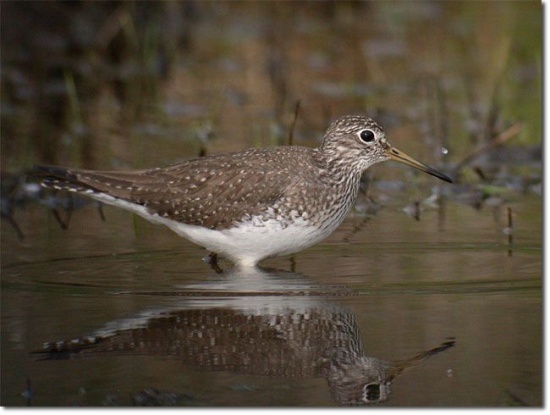- Tringa solitaria
Identification
This species is a dumpy wader with a dark green back, greyish head and breast and otherwise white underparts. It is obvious in flight, with wings dark above and below, and a dark rump and tail centre. The latter feature distinguishes it from the slightly larger and broader-winged, but otherwise very similar, Green Sandpiper of Europe and Asia, to which it is closely related. The latter species has a brilliant white rump. In flight, the Solitary Sandpiper has a characteristic three-note whistle.
Distribution
It breeds in woodlands across Alaska and Canada. It is a migratory bird, wintering in Central and South America, especially in the Amazon River basin, and the Caribbean. It is a very rare vagrant to western Europe.
Taxonomy
The Solitary Sandpiper, Tringa solitaria, is a small wader (shorebird). Its only close relative in the genus Tringa is the Green Sandpiper (Pereira & Baker, 2005); they both have brown wings with little light dots, and a delicate but contrasting neck and chest pattern In addition, both species nest in trees, unlike most other scolopacids.
Habitat
The Solitary Sandpiper is very much a bird of fresh water, and is often found in sites, such as ditches, too restricted for other waders, which tend to like a clear all-round view
Behaviour
This is not a gregarious species, usually seen alone during migration, although sometimes small numbers congregate in suitable feeding areas. .
Food is small invertebrates, sometimes small frogs, picked off the mud as this species works steadily around the edges of its chosen pond
The Solitary Sandpiper lays 3-5 eggs in an old tree nest of a songbird species, such as a thrush. The young birds are believed to drop to the ground on their own soon after hatching.




